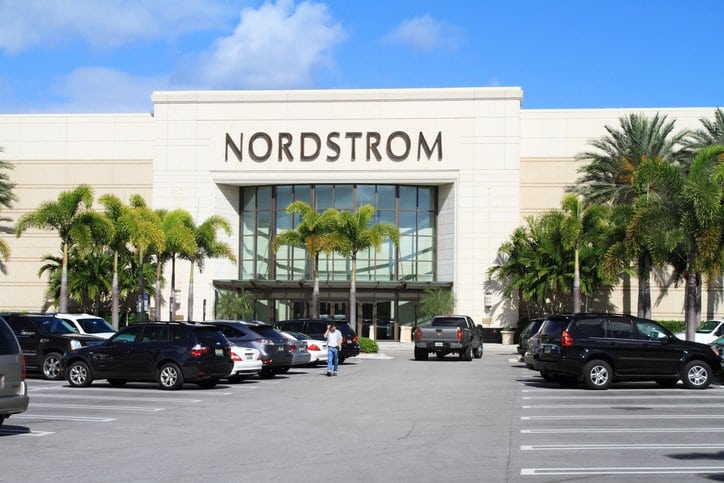Personalization
WWD Byline: How Nordstrom Brings Personalized Customer Service Online, at Scale
October 24, 2019

It’s easy to think that a brand has to be a digital native to offer a superior digital experience. Nordstrom shows that absolutely doesn’t have to be the case. Leveraging a long history of peerless customer service, Nordstrom moved up six places, ranking second overall in Sailthru’s Retail Personalization Index for 2019. That places Nordstrom just behind Sephora, which also has a substantial physical footprint. These two hybrid retailers outshone hot digital properties such as The RealReal and Net-a-Porter.
Nordstrom’s digital dominance stems from its reputation for legendary customer service, and the brand’s determination to extend that service ethos to its digital offerings. With its commitment to putting the customer first, Nordstrom, culturally, is well-prepared to see digital personalization through the best possible lens: That of serving the customer how, when, and on the channel they prefer. That creates a customer experience that drives sales and loyalty.
How a Cruise Ship Beat the Speedboats
Nordstrom embarks on personalization a little differently than some smaller, newer, digitally native brands. Those brands, metaphorically, are speedboats. Nordstrom is a cruise ship. If you captain a cruise ship the same way you’d captain a speedboat, you’re asking for disaster. But Nordstrom is smarter than that. They’ve figured out how to rethink brand partnerships, customer experience and retail strategy, all by using testing as their foundation. They are better at this than any of their direct competitors, and are winning by being data-driven.
Nordstrom understands that their physical stores, and the interactions that take place there, are still a sizable advantage. Like so many retailers, Nordstrom collects and analyzes data online. But its real genius is in marrying that with offline data to create a superior experience across channels.
How exactly does Nordstrom do this? It started early. So early, in fact, that some of its efforts may seem quaint now: When Nordstrom first gained a big Pinterest following, it created in-store displays under the banner “Popular on Pinterest.” But all that experimentation and testing, and moving to embrace an omnichannel approach early on, is paying off. Nordstrom’s loyalty program includes a mix of digital and real-life rewards, such as consultations with stylists at the customer’s home, curbside pickup and free alterations.
Gaining Mobility With Mobile
Nordstrom’s mobile app highlights the brand’s omnichannel strength. It’s the best example we’ve seen of digital clienteling at a massive scale, and its best feature may be “store mode.” The app helps customers find a store, then book an appointment with a personal shopper. Customers can browse the app and select clothing they’d like to try on in the store. Within two hours they’ll get a text letting them know if the items have been found. The items will be held for them until the store closes the next day. Customers can also use the app to check inventories and manage their rewards membership.
Even if a customer isn’t using the app in store mode, they’ll still find it to be thoughtfully designed. Any items a customer has saved or added to their cart will show up in the app, regardless of which channel the customer took action on. Respecting the fact that customers act differently in each channel, the app is customized to reflect the customer’s experience and preferences as they’re expressed on the mobile platform.
Making the Journey Personal
That same dedication to customer service shows up on Nordstrom’s homepage. Again, any items that a customer has saved or added to their cart are displayed prominently at the top of the page. Brands that a customer purchases frequently will show up at the bottom, with new arrivals. Customers can even “shop by look,” to shop entire outfits — including shoes, jewelry and makeup — rather than individual items. Its “more looks for you” even lets customers browse stylist-assembled looks and filter by activity. Navigating Nordstrom’s huge catalogue could be a nightmare, but thanks to the extensive use of recommendations, it’s actually a ton of fun.
Nordstrom also includes recommendations in almost all of its e-mails. Even if a customer is returning an item, they’ll receive an e-mail that offers suggestions for items in the category and price range that the customer just tried. Great deals on selected items are carefully curated using a shopper’s browsing and purchase history, then emailed with catchy — and accurate — subject lines such as, “New markdowns on brands and styles you love.”
And despite its leadership position, Nordstrom is still pushing forward. In March 2018, it bought a digital selling tool called BevyUp and a conversational messaging app called MessageYes. Nordstrom sales associates can already see a customer’s browsing history, the better to make in-store suggestions. Nordstrom’s commitment to personalized service, across all channels, makes this 110-year-old company a formidable competitor for the modern retail age.
The State of Brand Loyalty in the U.S. in 2023
Related



